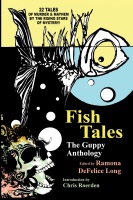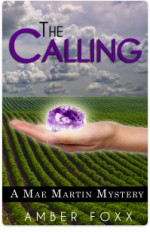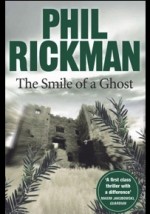 My favorite on-going medieval series is Jeri Westerson’s Crispin Guest. Crispin is a wonderful and wonderfully original character, “a disgraced knight turned detective on the mean streets of fourteenth century London,” as her website states. Westerson’s gritty world of “medieval noir” is very different from most earlier medieval mysteries, especially the iconic Brother Cadfael books of Ellis Peters, a series which arguably jump-started the genre.
My favorite on-going medieval series is Jeri Westerson’s Crispin Guest. Crispin is a wonderful and wonderfully original character, “a disgraced knight turned detective on the mean streets of fourteenth century London,” as her website states. Westerson’s gritty world of “medieval noir” is very different from most earlier medieval mysteries, especially the iconic Brother Cadfael books of Ellis Peters, a series which arguably jump-started the genre.
Monks or knights? Which shall it be? Of course, Crispin is a knight no longer–at least not technically. He retains, however, a knightly frame of mind even as he is cast down into the lowest dregs of society, living hand-to-mouth. Watching his preconceptions transform as he experiences life as the poor live it, is one of the deepest pleasures of the series. Of course, Crispin no longer moves in courtly circles, though his new work sometimes takes him to his old haunts–a difficult experience, as you can imagine.
One of things that I like about the series is, in fact, that it takes place beyond the confines of courtly circles. While my earliest ventures in historical fiction were typically stories of queens and others who lived among the powerful movers and shakers of the time, nowadays I find that I’m more interested in reading about everyday people and how they lived in distant times.
 Another favorite medieval series, Sharan Newman’s Catherine LeVendeur, fits this mold, too. Whereas Crispin Guest is a bit of a riff on the courtly knight, Newman’s series has a similar tangential relationship to the familiar world of the medieval monastery. Its heroine, Catherine, starts out as a young novice in the convent of the famous Heloise, of star-crossed “Heloise and Abelard” fame, but during the course of the first book Catherine discovers that, despite her scholarly inclinations, her real vocation lies in the world outside the safe confines of the convent. The series seems to have come to a halt, alas, at least for the time being.
Another favorite medieval series, Sharan Newman’s Catherine LeVendeur, fits this mold, too. Whereas Crispin Guest is a bit of a riff on the courtly knight, Newman’s series has a similar tangential relationship to the familiar world of the medieval monastery. Its heroine, Catherine, starts out as a young novice in the convent of the famous Heloise, of star-crossed “Heloise and Abelard” fame, but during the course of the first book Catherine discovers that, despite her scholarly inclinations, her real vocation lies in the world outside the safe confines of the convent. The series seems to have come to a halt, alas, at least for the time being.
Knights, nuns, and monks all possess a certain mystique. They don’t live like other folks. They have lofty concerns–at least in theory. I’m sure I’m not the only child who was fascinated by knights–partly because I also loved horses. I devoured tales of King Arthur, and still today when we’re in a toy store, I can’t pass a display of colorful knights with their emblazoned shields and fancy helmets–and horses–without stopping to pick them up and examine them one by one.
As I grew older, I became fascinated by monasticism, too. It started, I think, with hearing Samuel Barber’s Hermit Songs in a college recital. I loved the music and promptly went out and bought a recording. The back of the album (yes, those were in the days of the LP) listed all the wonderful texts: translations/paraphrases by W.H. Auden of marginalia written by monks in the manuscripts they were copying. I think what appealed to me most about the Hermit Song texts was the prospect of solitude: “Ah, to be all alone, in a little room, with nobody near me …” begins the final song of the cycle, set to a haunting melody that I still can recall word-for-word. A few years later I stumbled on Thomas Merton‘s Seven Storey Mountain and became a Merton groupie. But I’ve never been tempted to actually sign up. I think the prospect of surrendering complete obedience is far more daunting than the other vows of poverty and chastity.But the monastic life continues to fascinate and inspire me.
Though most of us aren’t cut out for the monastic life and none of us lives in the age of knighthood, both lifestyles hold great appeal and account, I believe, for much of the popularity of the medieval mystery genre.
Which do you prefer reading about when you go browsing for medieval fare: knights, nuns, or something else altogether? Stop by and share.













marysuttonauthor said,
June 15, 2012 at 8:30 am
I’ve got to confess a deep and abiding affection for the Br. Cadfael series. I think Peters has such a great cast of characters there. Love Hugh Beringar.
Nancy Adams said,
June 15, 2012 at 8:40 am
I love Cadfael, too. Comfort reading that’s especially good for a chilly winter’s eve. Thanks for stopping by!
Priscilla said,
June 15, 2012 at 9:18 am
The medieval monks and nuns were a varied lot. Many had no vocation but were simply “given” to the Church. There were teenaged bishops and the skilled abbot politician was needed in the power struggles between Church and State. It was a good choice for many women who had few career options because monasteries required good business heads to survive. So I’ll take the monastics as the most intriguing bunch!
Nancy Adams said,
June 15, 2012 at 12:13 pm
Yes, it’s a great character choice for a female lead since it gave them so many opportunities. Hence the popularity of Margaret Frazer’s Dame Frevisse series as well as Newman’s Catherine LeVendeur.
jan said,
June 15, 2012 at 9:31 am
I love Cadfael, and he’s the first medieval mystery I read. Love Crispin, as you say, for the “riff” on knighthood. I do prefer, though, someone outside a monastery/convent; I’m not religious and get a little bogged down with the details of life for someone in them. Though to that end, I do love Dame Fevrisse, but she’s an exceptional exception. Her Joliffe the traveling actor/spy and Kate Sedley’s Roger the Chapman are my favorite medieval sleuths right now…
Nancy Adams said,
June 15, 2012 at 12:14 pm
Yes, I’ve been meaning to read the Joliffe series. It sounds like so much fun! Haven’t heard of Roger the Chapman–putting that on my toppling TBR pile right now!
jan said,
June 15, 2012 at 10:43 am
I did mean “her” as in Margaret Frazer, not Dame Fevrisse 😦
Nancy Adams said,
June 15, 2012 at 12:15 pm
I figured that!
Gayle Bartos-Pool said,
June 15, 2012 at 3:48 pm
I am a fan of Crispin Guest. Jeri Westerson captures a truly great Noir hero even though he abides in the 14th Century. She does a great job defining the atmosphere, the locale, and the attitude of that period, yet keeps the story totally readable like a Raymond Chandler novel. Well worth a look.
Nancy Adams said,
June 16, 2012 at 4:42 pm
Hear, hear! Anyone who loves historical mysteries should check it out.
Thanks for stopping by!
Gloria Alden said,
June 15, 2012 at 3:51 pm
I love, love, love the Brother Cadfael series. His character is so rich with his backstory. I also like Jeri Westerson’s Crispin books,too.
I actually became more interested in the Middle Ages when I started reading the simplified King Arthur stories and the wonderful book A Door in the Wall to my third graders. It expanded into a large unit with the kids writing reports on different aspects of the time, having a market day where they bartered with things they’d made themselves, having jousting matches with cardboard tubes, writing their own plays, poetry and stories and building castles out of cardboard with a list of all the things they were to include for a grade.
Nancy Adams said,
June 16, 2012 at 4:43 pm
I don’t know A Door in the Wall, but it sounds like something I’d love. You sound like a great teacher–what a fun class that would be!
Jeri Westerson said,
June 18, 2012 at 1:29 am
Thanks for the shout out, Nancy. Br. Cadfael started me on this journey. All of us who write medieval mysteries tip our hats to Ellis Peters.
Nancy Adams said,
June 18, 2012 at 8:44 am
Thanks for stopping by, Jeri. I’m honored!
Yes, Br. Cadfael is wonderful and never dates. Ellis Peters was a heckuva writer.
Happy Birthday, Thomas Merton | Saints and Trees said,
January 30, 2014 at 1:25 pm
[…] me to Merton’s autobiography. Perhaps I was vaguely aware of the name, and in any case I had a long-standing fascination with monasticism. In college I heard Samuel Barber’s Hermit Songs for the first time and was immediately […]